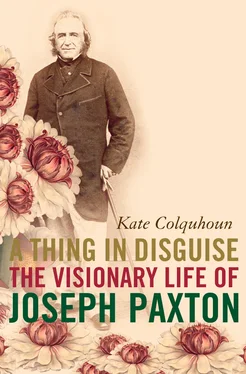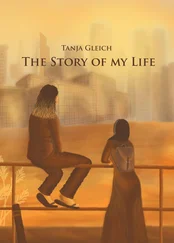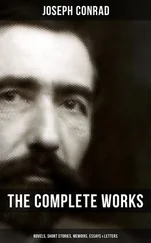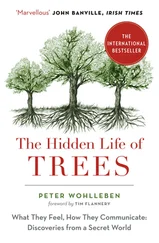*Paxton was often coming up against Forbes, and the two certainly met several times. The Duke of Bedford and his gardener wanted to rival Devonshire and Paxton at Chatsworth. In a letter to Sarah, 26 January 1836, Paxton wrote: ‘I went to Woburn on Friday and what do you think old John Bedford has been at? Why, making an arboretum this winter in emulation to the one at Chatsworth, it will be a miserable failure. This is not all – the old codger has had Sir Jeffry Wyatville from London to design a STOVE. I suppose they are jealous of us …’ (Devonshire Collection; Paxton Group No. 260). ‘The Duke declared the hothouse ‘handsome … but not new or original’ and the gardener Forbes ‘a very consequential stupid fellow – very different from my gardener I think’. (6th Duke’s Diaries, 10 November 1836).
*In December, the horticulturist Dr Daniel Rock sent from Alton Towers, with Lord Shrewsbury’s compliments, a banana (Musa sapintum), hearing of the Duke’s interest in curious tropical fruits: ‘it may be eaten raw but I should think that it would be far more pleasant when cooked in a thin silver dish, like a pudding. I think (I speak in doubt) with butter.’ (Devonshire Collection, 6th Duke’s Group, 2 Dec. 1834.)
*A rare indication of Paxton’s accent. Leveson-Gower noted the Bedfordshire accent which never quite left Paxton, in particular his misuse of the letter H which could cause some confusion: ‘he once said that his employer had the heye of an ’awk and when it was proposed to build a church … in his neighbourhood he offered to ‘eat it’.
Paxton and the Duke were ambitious for yet more floral prizes and they knew that orchid treasure was there for the taking. With almost 30,000 species and native to every continent except Antarctica, flourishing in the most arid desert and the densest cloud forest, orchids make up around 10 per cent of all flowering plants, exceeded in variety only by the daisy family. ‘Of all tribes of plants this is the most singular, the most fragrant and the most difficult of culture,’ wrote Lindley in Loudon’s Encyclopaedia of Plants . ‘The flowers are often remarkable for their grotesque configuration … The species are found inhabiting the mountains and meadows of the cooler parts of the globe, or adhering by their tortuous roots to the branches of the loftiest trees of the tropical forest to which their blossoms often lend a beauty not their own …’ The most seductive tribe of plants, orchids held a unique status in the horticultural world. So, with thriving trade routes assisting botanical exploration, and with the Indian collections of William Roxburgh and Robert Wight as precedent and stimulus, it was to the tropical mountains in India that the Duke decided to send his explorer to search out prized epiphytes, the orchids found clinging to the branches of host trees.
The Duke had been interested in the progress of various plant hunting expeditions for some time – he had subscribed to an unsuccessful expedition to Mexico the previous year, from which the collector had returned early and unwell, with few new plants. Huntley had sent a man to ‘the Spanish Main’ in the formation of his own collection. As he sent off the cheques to Huntley, the Duke gave orders to Paxton that arrangements should be made and put into action for their very own adventure.
Lord Auckland, a friend of the Duke, had been posted to India as Governor General and was making his own preparations for departure. This was their opportunity. ‘The expense of the journey to Calcutta,’ wrote Paxton to the Duke in March 1835, ‘if permission was given to go out with the Governor General would not exceed £ 100, otherwise it might cost a serious sum.’ Paxton next considered who should be sent. He chose one of his ‘intelligent’ gardeners at Chatsworth, John Gibson: ‘he has a good knowledge of plants, particularly orchideae, is obliging in his manner and very attentive’. Gibson had been drawn to Paxton’s attention when he submitted an article to the Horticultural Register , published in October 1832. The following year, he had arrived to work at Chatsworth from the gardens at Eaton Hall near Congleton, where he had worked with his father. Now he was sent for a season to learn the secrets of orchid cultivation from Joseph Cooper, a specialist orchid grower for Earl Fitzwilliam at nearby Wentworth Woodhouse. In preparation for his expedition to India, he was then dispatched to trawl the nurseries in London and as many public and private gardens and herbaria as he had time to examine.
While Gibson set about accumulating as much knowledge as possible to ensure the success of his mission, the Duke approached his friend Lord Auckland, on the point of sailing. He also wrote to solicit the assistance of Dr Nathaniel Wallich, the curator of the Botanical Garden in Calcutta which had become something of a clearing house for plants from all over southern Asia. From Glasgow, William Hooker wrote letters of introduction and at Chatsworth, Paxton began a collection of double dahlias and other showy flowers that were likely to thrive in India, all to be packed up as a gift for the Calcutta gardens. He was very aware that the success of the expedition relied not only on finding new varieties, but in transporting them home alive, advising Gibson that all his plant discoveries should be established in boxes at least three months before they started their journey home, to maximise the likelihood of their surviving the voyage.
The transportation of plants by sea, their exposure to the wind and salt in particular, had been a hit-and-miss affair and it was often the case that a vast proportion of plants sent home from abroad would perish in transit. Happily, the surging numbers of new plant species being discovered around the world now acted as an impetus to innovation. Gardening magazines, including the Horticultural Register , were filled with illustrations of ‘new’ designs for boxes, cases or jars, all of which promised increased success. For the Indian trip, John Lindley suggested that Gibson take a new kind of packing case which had already been used with some success. Loddiges, too, recommended the use of these air-tight boxes made of wood and plate glass into which the plants were placed in soil and watered, before being tightly sealed.
These were the ‘Wardian cases’, designed by Nathaniel Ward after a chance discovery, during which he found that a sealed jar into which he had placed a moth cocoon had also preserved the small plants hidden within the moss used as packing material. He had reasoned that, so long as the plant material was watered before the jar was sealed, moisture would evaporate and condense against the glass, maintaining a consistently moist environment, perfect for plants. For overseas collection, this was a real breakthrough and, as their success was proved, smaller and more decorative Wardian cases also became fashionable in the drawing rooms of many middle-class Victorians in Britain, used particularly for the display of the ferns that so fascinated them.
Orchids were not the Duke’s only obsession. In 1826 Nathaniel Wallich had discovered an evergreen tree with velvety leaves and glorious scarlet and yellow flowers in Burma near the town of Martaban on the Salven River. He claimed that the tree was unsurpassed in magnificence or elegance and his descriptions inflamed the imagination and desire of botanists and gardeners everywhere. Amherstia nobilis , as it was called, had never survived transportation to England. Its very rarity, quite apart from its beauty, meant that it would be the perfect prize for Chatsworth, and the Duke valued it above all else. So Gibson was also to go to Martaban to procure Amherstia for the glory of the Devonshires.
Читать дальше











